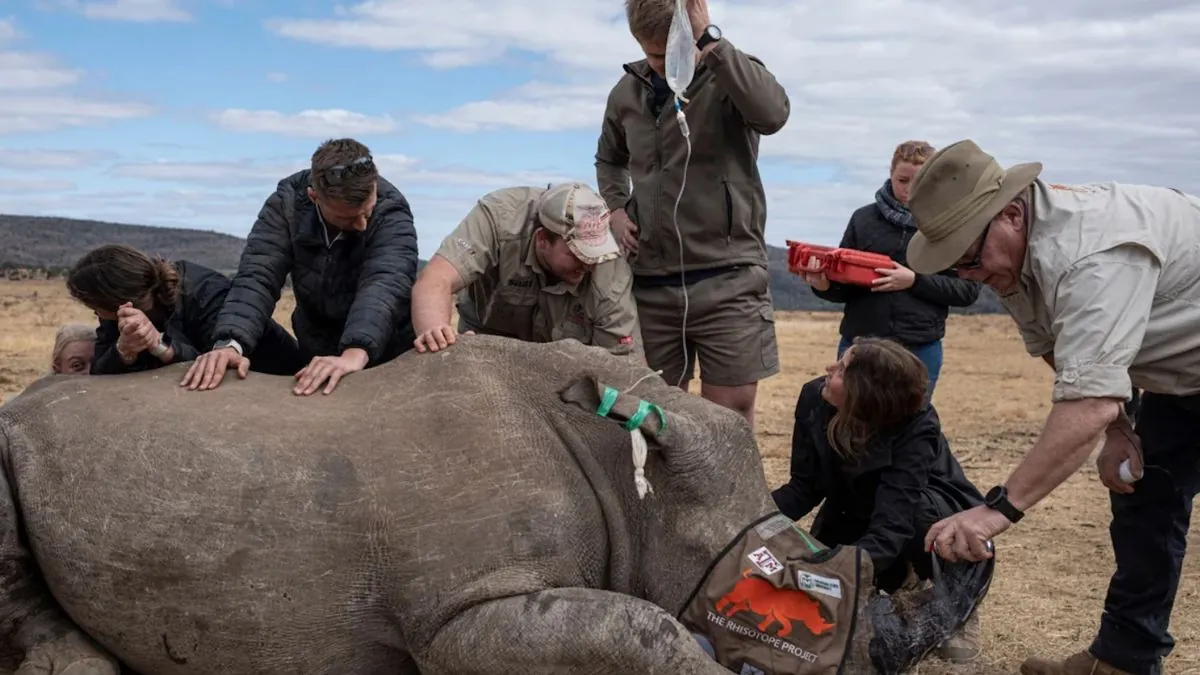Radioactive horns against poachers: scientists inject rhinos with radioisotopes that pose no risk to animals
Kyiv • UNN
Researchers in South Africa injected radioactive material into the horns of 20 rhinos to combat poaching, making the horns visible at borders and unusable on the black market in case of poaching.

A team of researchers from South Africa is convinced that they have made a "breakthrough of historic proportions" in an anti-poaching project: radioactive material was injected into the horns of 20 rhinos. Scientists explained the effects of isotopes on other animals, UNN reports with reference to Associated Press.
Details
Researchers from South Africa have injected radioactive material into the horns of 20 rhinos as part of a research project aimed at reducing poaching.
We introduce radioisotopes to rhinos for the first time
A tiny amount of radioactive material was attached to the horns of 20 animals - with no apparent harm to the rhinos or the environment.
The idea is extremely important: as indicated, as a result of this combination , animals will be better protected. If an animal is smuggled through customs, it will be visible. If an animal is killed by poachers, the "marked" ivory can no longer cross the border and end up on the international black market.
HelpHelp
The study, which involves veterinarians and nuclear experts, begins with putting the animal to sleep and then drilling a hole in the horn and carefully injecting the nuclear material. This week, researchers from the Department of Radiation and Medical Physics at the University of the Witwatersrand in South Africa injected 20 live rhinos with these isotopes.

Scientists hope that this process can be repeated to save other wild species vulnerable to poaching, such as elephants and pangolins.
Pets can improve the health of your children - study31.01.24, 06:30 • 25856 views
We do this because it makes it much easier to intercept these horns when they are transported across international borders, because there is a global network of radiation monitors that were developed to prevent nuclear terrorism. And we are working in this direction
Poaching in the Tuzly Estuaries: the leadership versus the military17.06.24, 20:28 • 20986 views